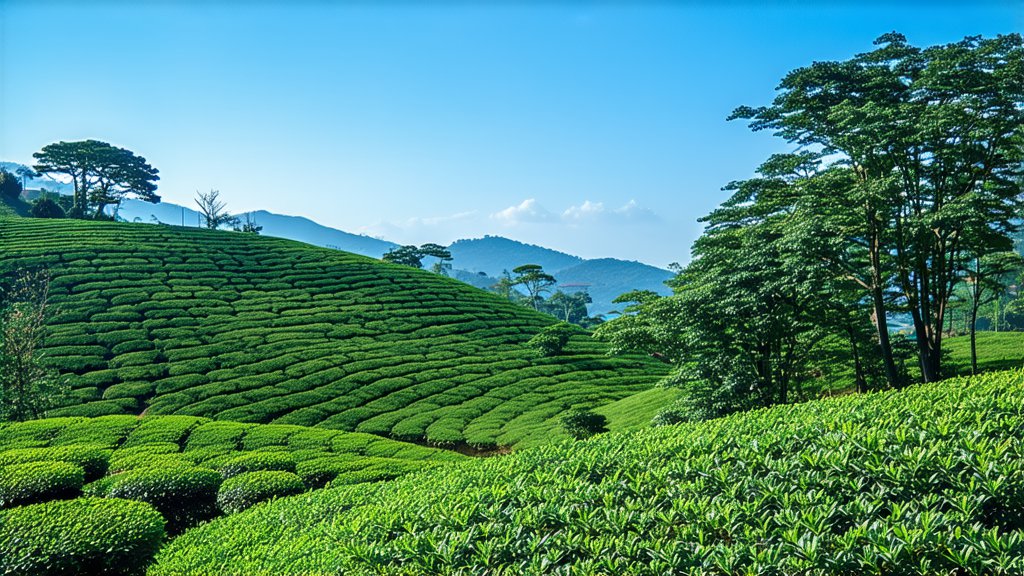
In the vast tapestry of global tea culture, few varieties hold as storied and revered a place as Keemun Black Tea. Hailing from the picturesque mountains of Qimen County in Anhui Province, China, Keemun, also known as Qimen Black Tea, stands as a testament to centuries of tea-making tradition, innovation, and cultural significance. This article embarks on an exploration of this exquisite beverage, delving into its historical roots, the diversity within its categories, the intricate craftsmanship behind its production, and the art of its appreciation.
A Glimpse into History
The origins of Keemun Black Tea trace back to the Tang Dynasty (618-907 AD), with its prominence solidifying during the Qing Dynasty (1644-1912). Legend has it that a local tea farmer named Xu Ganxi discovered the unique processing method that gave birth to this distinctive tea. Unlike other black teas that were typically sun-dried, Keemun underwent a novel combination of withering indoors followed by roasting over charcoal, which imparted a smoky aroma and rich flavor profile unlike any other. This innovative technique quickly gained favor among the imperial court and international traders alike.
Varieties of Keemun
Keemun Black Tea encompasses several sub-varieties, each with its own character and charm. Among them are:
- Gongfu Keemun: Known for its smaller leaf grade and meticulous handcrafting, it offers a more concentrated and robust flavor, often favored by connoisseurs.
- Special Supreme Keemun: Made from the finest young leaves and tips, this variety boasts a delicate balance between sweetness and the signature smokiness.
- Smoky Keemun: Emphasizing the traditional charcoal roasting process, it delivers an intense smoky aroma and bold taste, reminiscent of forest fires.
- Fragrant Keemun: Lesser known but equally intriguing, this variant focuses on enhancing the natural floral and fruity notes inherent in the tea leaves.
The Art of Craftsmanship
The creation of Keemun Black Tea is a meticulous process that marries nature's bounty with human ingenuity. It all begins with the careful selection of tea leaves, typically from the Camellia sinensis var. assamica or sinensis plants, grown at elevations ranging from 600 to 1,500 meters above sea level. These high-altitude gardens benefit from cooler temperatures and misty conditions, fostering slow growth and thereby concentrating flavors.
Once harvested, the leaves undergo several stages of transformation:
- Withering: Freshly picked leaves are spread out thinly to wilt under shade, allowing moisture content to decrease and initiating enzymatic activity.
- Rolling: The withered leaves are gently rolled to break down cell walls, facilitating better oxidation and releasing essential oils.
- Oxidation: Unlike green teas, black teas like Keemun undergo full oxidation, turning the leaves a dark copper color and developing complex flavors.
- Roasting: The hallmark of Keemun lies in its roasting process. Leaves are roasted over charcoal or wood fires, imparting that unmistakable smoky essence while further drying the leaves.
- Sorting and Grading: Finally, the tea is sorted according to size and quality, ensuring consistency and purity in each batch.
Savoring Keemun: The Art of Appreciation
To truly appreciate Keemun Black Tea, one must engage not just the palate but all senses. Begin by observing the dry leaves, their wiry shape interspersed with golden tips, hinting at their quality. As hot water meets tea, watch the leaves unfurl gracefully, releasing a symphony of aromas – from smoky and earthy to subtle hints of floral sweetness.
The first sip reveals a full-bodied liquor, where the smokiness dances harmoniously with underlying maltiness and a touch of sweetness. Allow the tea to linger on your palate, exploring its complexity and depth. With each subsequent infusion, the flavors evolve, revealing new facets of its character.
For an authentic experience, pair Keemun Black Tea with light snacks such as shortbread cookies or delicate pastries, which complement rather than overpower its nuanced flavors. Alternatively, savor it alone, allowing the mindful act of tea drinking to become a meditative practice, connecting you to centuries-old traditions and the tranquil landscapes from which it originates.
In conclusion, Keemun Black Tea is more than just a beverage; it is a bridge between past and present, a symbol of Chinese tea artistry, and a source of endless fascination for tea enthusiasts worldwide. Its history whispers tales of ancient dynasties, its varieties cater to diverse preferences, and its craftsmanship embodies the harmony between man and nature. As you raise your cup to your lips, remember that within each sip lies a story waiting to be told and a world of flavors yet to be explored.